The Perennial Plant of the Year is chosen by the Perennial Plant Association for its suitability for a wide range of growing climates, low maintenance, multiple seasons of interest and relative disease/pest resistance.
2014 Panicum virgatum 'Northwind' (Switchgrass) - a native warm-season grass with an upright form, blue-green leaves and gold fall color. Like all Panicum (but different from some other warm-season grasses, the grass flowers are held just above the leaf blades. For more details, check out the PPA website - it will tell you some of the great attributes of switchgrass for your garden.

Panicum virgatum 'Northwind'

The Cary Award is given to trees, shrubs and vines ("woodies") with multiple seasons of interest and good disease and pest resistance. It is administered by the Tower Hill Botanic Garden. The purpose of the award is:
To inform home gardeners which plants would be good choices in their landscape, to instill confidence in the home gardener's selection, and to increase the diversity of plant material used by gardeners, landscape designers and architects.
The Cary Award has declared 2014 The Year of the Vine, and has selected three vines suitable for trellises, pergolas, porches, walls and anywhere else you need a climber.
Clematis X 'Betty Corning' (C. crispa X C. viticella) is a late, small-flowered clematis that was first discovered in Albany NY in 1932. It grows to about 6' tall and has nodding bell-shaped pale lavender flowers with recurved tips. It flowers freely from June to Sept. It needs only a little tying to grow well on a trellis, and can also be used as a ground cover if you're feeling adventurous - let it wind through your perennial border. It should be pruned back in late winter-early spring, and can be cut back all the way to the ground without losing the season's flowers.

Clematis 'Betty Corning'
Actinidia kolomikta (Variegated Hardy Kiwi Vine) - a relatively fast-growing deciduous woody vine which grows to about 15 - 20', is grown mainly for its foliage and its bark. It has variegated pink and white young leaves, fragrant white flowers in spring and peeling cinnamon-colored bark in winter. This species has both male and female plants - both are needed for pollination. The male plant has better leaf variegation - but 1' long greenish-yellow edible fruits are produced on the female plant in early fall.
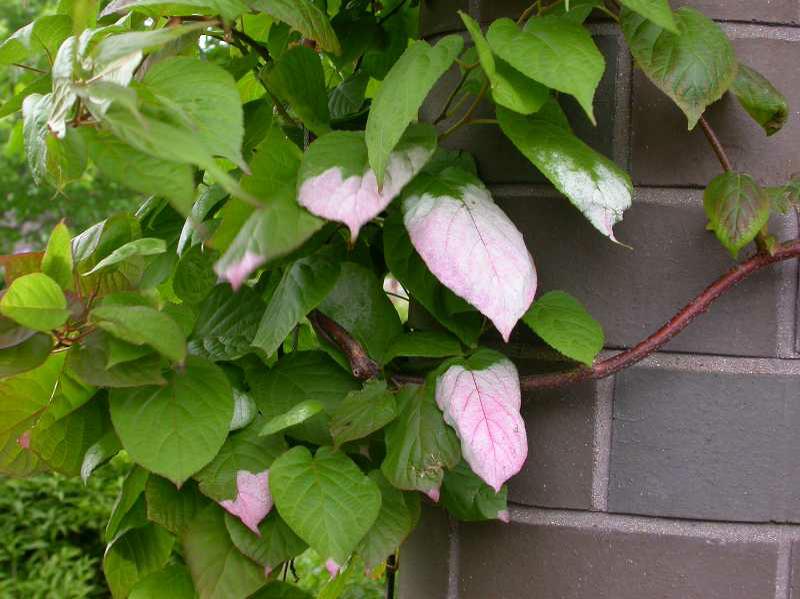
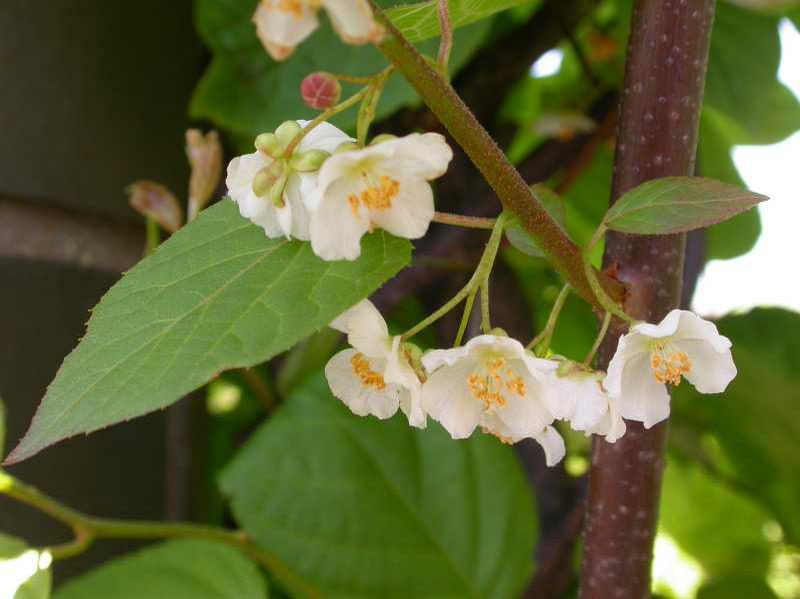
Hardy Kiwi VineFlowers of the hardy kiwi are obscured by the foliage, but are fragrant
Wisteria frutescens (American wisteria) - a twining woody vine that grows to 40' or more - but the good news is that it is a less aggressive spreader than Wisteria sinensis (Chinese wisteria). It flowers in April - May with fragrant, pea-like flowers in drooping 6" racemes, and may re-bloom on new wood in the summer. Flowers give way to flattened smooth seed pods that ripen in summer. Thebest flowering occurs in full sun.
Vines can take up to 3 years before flowering after they are planted, and they need regular pruning to control size and shape, as well as to encourage flowering. Don't choose this vine if you're impatient or prune-o-phobic. Also, take care where you plant it - it doesn't like to be transplanted very much. Failure of vines to flower can be caused by death of the flower buds during a harsh winter, too much shade, plants being too young, improper pruning or over-fertilization (which favors leaf growth over flower-bud formation). The two most common cultivars to be found in the Nursery trade are 'Amethyst Falls', with lavender flowers, and 'Nivea', with white flowers.
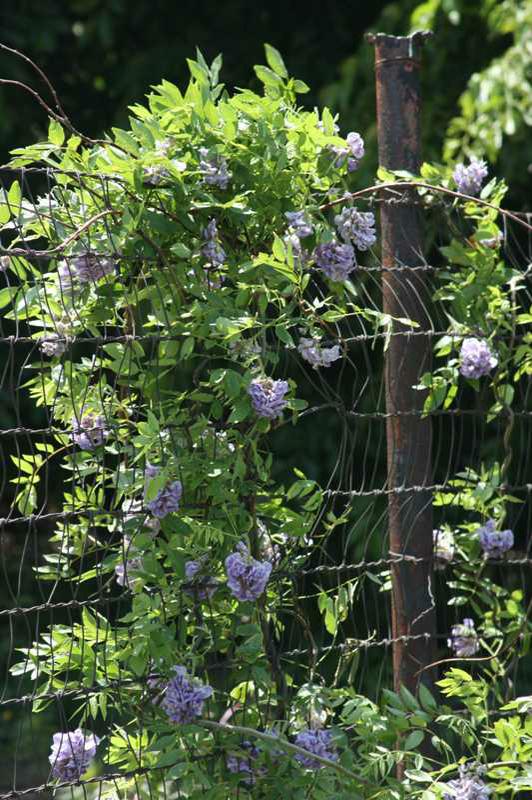
Wisteria frutescens 'Amethyst Falls'
All-America Selections honor new plants, including vegetables and annuals. For 2014, one of their selection is Guara 'Sparkle White', a perennial in Zone 6 and above, that flowers all season. It is a delicate plant with very clean white flowers that wave in the breeze above the foliage. A really nice addition to the perennial border - or use it in your containers.

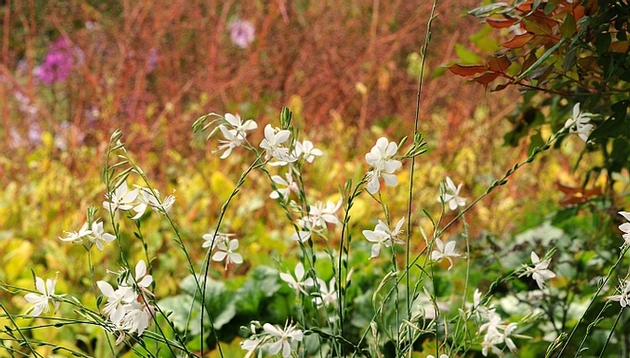

The Society of Municipal Arborists has chosen Parrotia persica 'Vanessa' (Persian ironwood or Persian witchhazel) as the 2014 Urban Tree of the Year. The SMA selects trees that are adaptable to a variety of harsh growing conditions with strong ornamental traits. Their selections are being used as street trees in some towns and cities across the country. The SMA's mission is to widen the knowledge base of arborists, designers and architects with the goal of adding diversity as well as beauty to the urban streetscape.
The 'Vanessa' cultivar has a number of qualities that make it desirable as a street tree: it is slow-growing, reaching a mature height of about 30'; it has an upright, almost columnar habit but has strong branch unions and is not prone to develop included bark (as some other columnar trees are); it handles reduction pruning fairly well, so its height can be managed by knowledgable municipal arborists if overhead wires are low; it has no major pests; it can tolerate both dry soils and seasonally wet ones. PLUS it has spectacular fall color and beautiful flakey gray bark. It flowers in late winter, before it leafs out - like witchhazel - but that can be an unexpected surprise for passers-by.

Parrotia persica 'Vanessa' fall foliage
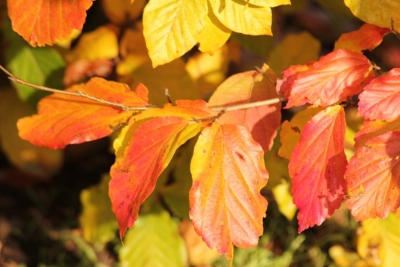
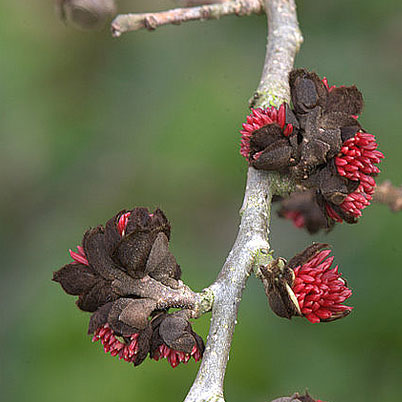

Parrotia flowers in late winterParrotia bark becomes more beautiful as it matures